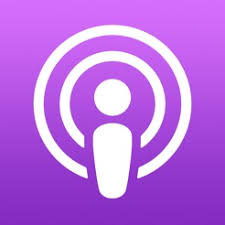
Mike Hoffman and Daniel Bogdanoff continue their discussion with Stefan Loeffler about optical communication. In the first episode, we looked at “what is optical communication?” and “how does optical communication work?” This week we dig deeper into some of the latest optical communication techniques and advances in the industry as well as the use of fiber optic cable in electronics and long-range telecommunication networks.
Audio Version:
Discussion Overview:
Installation of optical fiber and maintenance of optical fiber
We can use optical communication techniques such as phase multiplexing
There’s a race between using more colors and higher bitrates to increase data communication rates.
Indium doped fiber amplifiers can multiply multiple channels at different colors on the same optical PHY.
You can use up to 80 colors on a single fiber optic channel! 3:52
How is optical communication similar to RF? Optical communication is a lot like WiFi 4:07
Light color in optical fiber is the equivalent of carrier frequencies in RF
How do we increase the data rate in optical fiber?
There are many multiplexing methods such as multicore, wavelength division, and polarization 4:50
Practically, only two polarization modes can be used at once. The limiting factor is the separation technology on the receiver side. 6:20
But, this still doubles our bandwidth!
What about dark fiber? Dark fiber is the physical piece of optical fiber that is unused. 7:07
Using dark fiber on an existing optical fiber is the first step to increasing fiber optic bandwidth.
But wavelengths can also be added.
Optical C-band vs L-band 7:48
Optical C-band was the first long-distance band. It is now joined by the L-band.
Is there a difference between using different colors and different wavelengths?
Optical fibers are a light show for mosquitos! 8:30
How do we fix optical fibers? 10:36
For short distances, an OTDR or visual light fault detectors are often used by sending red light into a fiber and lights up when there’s a break in the fiber
Are there other ways to extend the amount of data we can push through a fiber? 11:35
Pulses per second can be increased, but we will eventually bleed into neighboring channels
Phase modulation is also used
PAM-4 comes into play with coding (putting multiple bits in a symbol)
And QAM which relies on both amplitude and phase modulation
How do we visualize optical fibers? 14:05
We can use constellation diagrams which plot magnitude and phase
Do we plan for data error? 15:00
Forward error correction is used, but this redundancy involves significant overhead
QAM vs PAM
64 Gigabot (QAM-64) was the buzzword at OFC 2017 16:52
PAM is used for shorter links while QAM is used for longer links
How do we evaluate fiber? 18:02
We can calculate cost per managed bit and energy per managed bit
Energy consumption is a real concern 18:28
The race between copper and fiber 19:13
Fiber wins on long distance because of power consumption
But does fiber win on data rate?
Google Fiber should come to Colorado Springs…and Germany!
To compensate for the loss of the signal on the distance, you push more power in for transmitting and decrypting
Fibers attenuate the signal much less than copper does
But the problem comes when we have to translate the signal back into electrical on the receiving end
Is there a break-even point with fiber and copper? 22:15
Optical communication technology in the future
What speed are we at now and what’s the next technology? 23:05
600 G technology will be here eventually
We can expect 1.5 years between iterations in bandwidth. This is really slow in terms of today’s fast-paced technology.
We typically see 100 G speeds today
Predictions 26:00


 Apple Podcasts
Apple Podcasts
 Google Podcasts
Google Podcasts
2 comments